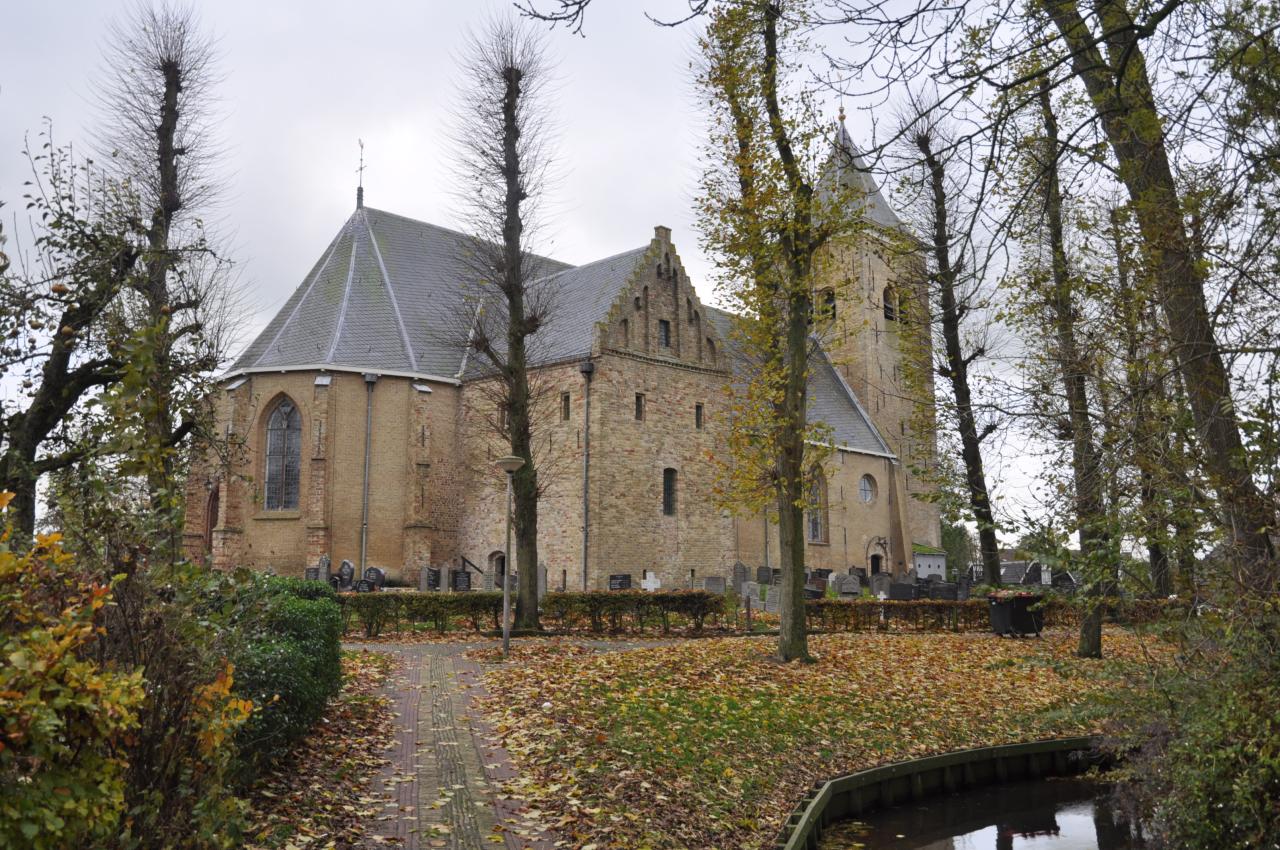Martinikerk

Reformed Church and Tower on moated churchyard. The Martini Church has the nickname “Cathedral among Frisian Village Churches”. The church with tower from 1688 is completely moated.

Reformed Church and Tower on moated churchyard. The Martini Church has the nickname “Cathedral among Frisian Village Churches”. The church with tower from 1688 is completely moated.
Reformed Church on enclosed churchyard. In the church 17th century pulpit with cornice panels and two 19th century text boards. Organ made in 1876 by W. Hardorff. In the roof turret a bell by Stephanus, 1312, diam. 95 cm. Mechanical tower clock S. Rodenburg, Sneek, first quarter 20th century
The first church of this village, according to the chronicles, was built in the year 1303 by a noble maiden from the family of Ubnia, who entered a convent, on the north side of the old convent, next to the stins of Brother Dodo Tjebbinga, who gave this new church a beautiful crucifix; while it was endowed with two beautiful paintings by his two brothers, Gerlacus and Benedictus. However, this church later fell into disrepair due to old age, and in 1508 a completely new one was built for it, and provided with a new tower, because the old one had already collapsed the previous year." The church on the relatively high cemetery mound is surrounded by a gravel path with a double hedge with lime trees. The church was built in 1873 to a design by JA Timmenga to replace an older house of worship. The building is constructed of grey-brown brick with yellow reveals around the windows with iron traceries. The tower is incorporated in the west facade and provided with a wooden superstructure with a constricted, octagonal spire with slates. The church roof has blue glazed, corrugated Frisian tiles. During restoration, the gravestone of the last abbot of Bloemkamp, the Cistercian abbey near Hartwerd, was found. The gravestone of Thomas van Groningen is displayed in the church.
Simple neo-Gothic village church with tower. Characteristic work in the extensive oeuvre of Alfred Tepe (1840-1920). The Sint Martinuskerk was built in 1892. The church has 12 pillars, which symbolize the 12 apostles, 'the pillars of the church'. The 14 painted Stations of the Cross are from 1852 (O. de Boer). The stained glass windows show images of Christ's Birth, The Last Supper and the Eight Beatitudes.